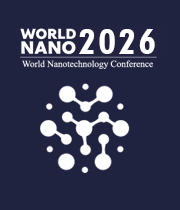Environmental Nanotechnology
Nanotechnology has the ability to significantly improve the quality of our air, water, and energy generation, resulting in significant environmental impacts. Environmental nanotechnology is the use of nanotechnology techniques to mitigate or prevent environmental degradation. Nanotechnology can have an impact on our environment by offering solutions to clean up existing pollutants. Environmental nanotechnology has a lot of potential for improving our planet's quality of life. Nanotechnological materials, methods, and applications are predicted to make major contributions to environmental and climate protection by conserving raw resources, energy, and water, as well as lowering greenhouse gas emissions and hazardous waste. As a result, using nanomaterials offers some environmental benefits and sustainable impacts. Nanotechnology, on the other hand, is now playing a little part in environmental protection, whether in research or in real - time applications.
- Nano-Enabled Treatment Technologies
- Nano-Sensors for Biological/Chemical Contamination
- Nanomaterials for Water, Soil and Air Remediation
- Nanopollutants
- Environmental Monitoring with Nanotechnology

Harry Ruda
University of Toronto, Canada
Raman Singh
Monash University, Australia
Paulo Cesar De Morais
Catholic University of Brasilia, Brazil
Xiao Hong Nancy Xu
Old Dominion University, United States
S V A R Sastry
Harcourt Butler Technical University, India
Vinayak Adimule
Angadi Institute of Technology and Management, India



Title : 40,000 implants in humans and no failure: The impact of nanomedicine
Thomas J Webster, Hebei University of Technology, China
Title : Cellulose-derived biochar modified with iron oxide and ZnO nanoparticles by a novel one-step pyrolytic method for removal of emerging contaminants from water
Rashad Al Gaashani, Hamad Bin Khalifa University, Qatar
Title : Harnessing the unique properties of engineered nanostructures for sensing
Harry Ruda, University of Toronto, Canada
Title : Circumventing challenges in developing CVD graphene on steels for extraordinary and durable corrosion resistance
Raman Singh, Monash University, Australia
Title : Nano DAP augments productivity, phosphorus use efficiency, and profitability of spring wheat in India
Binaya Kumar Parida, Coromandel International Ltd, India
Title : Lipid nanoparticles formulations: From bench scale to industrial scale
Mohammad A Obeid, RAK Medical and Health Sciences University, United Arab Emirates